Markets reacted sharply to renewed trade war fears as Trump’s tariff threats and rising U.S.–China tensions drove investors toward safe-haven assets. The euro rose above $1.14, while gold and silver rallied on geopolitical concerns.
The British pound gained on dollar weakness ahead of key economic data, while the yen slipped despite hawkish BoJ signals. Attention turns to the ECB meeting and Friday’s U.S. jobs report for further direction.
| Time | Cur. | Event | Forecast | Previous |
| 09:00 | EUR | Core CPI (YoY) (May) | 2.4% | 2.7% |
| 09:00 | EUR | CPI (YoY) (May) | 2.0% | 2.2% |
| 09:00 | EUR | Unemployment Rate (Apr) | 6.2% | 6.2% |
| 14:00 | USD | JOLTS Job Openings (Apr) | 7.100M | 7.192M |
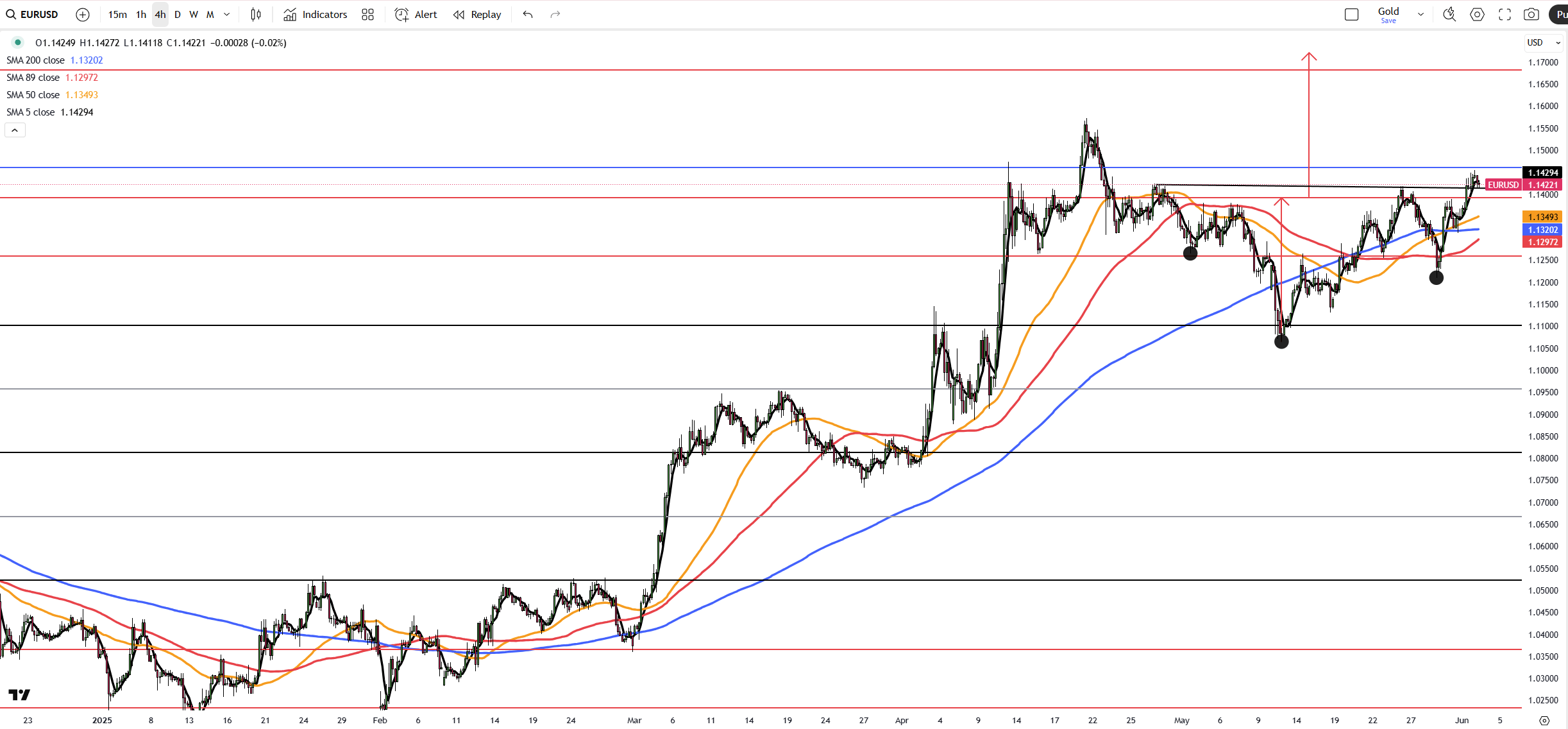
The euro climbed above $1.14 on Tuesday, its highest level since April 21, as investors pulled back from U.S. assets amid growing trade policy uncertainty. The move followed President Trump’s threat to double steel and aluminum tariffs and renewed tensions with China over a broken tariff truce. Focus now shifts to Thursday’s ECB meeting and Friday’s U.S. jobs data. While a 25 basis point rate cut is expected, attention will be on forward guidance as some ECB officials have urged caution to assess the impact of U.S. tariffs on inflation and growth.
The key resistance is located at 1.1460 and the first support stands at 1.1300.
| R1: 1.1460 | S1: 1.1300 |
| R2: 1.1500 | S2: 1.1260 |
| R3: 1.1580 | S3: 1.1210 |
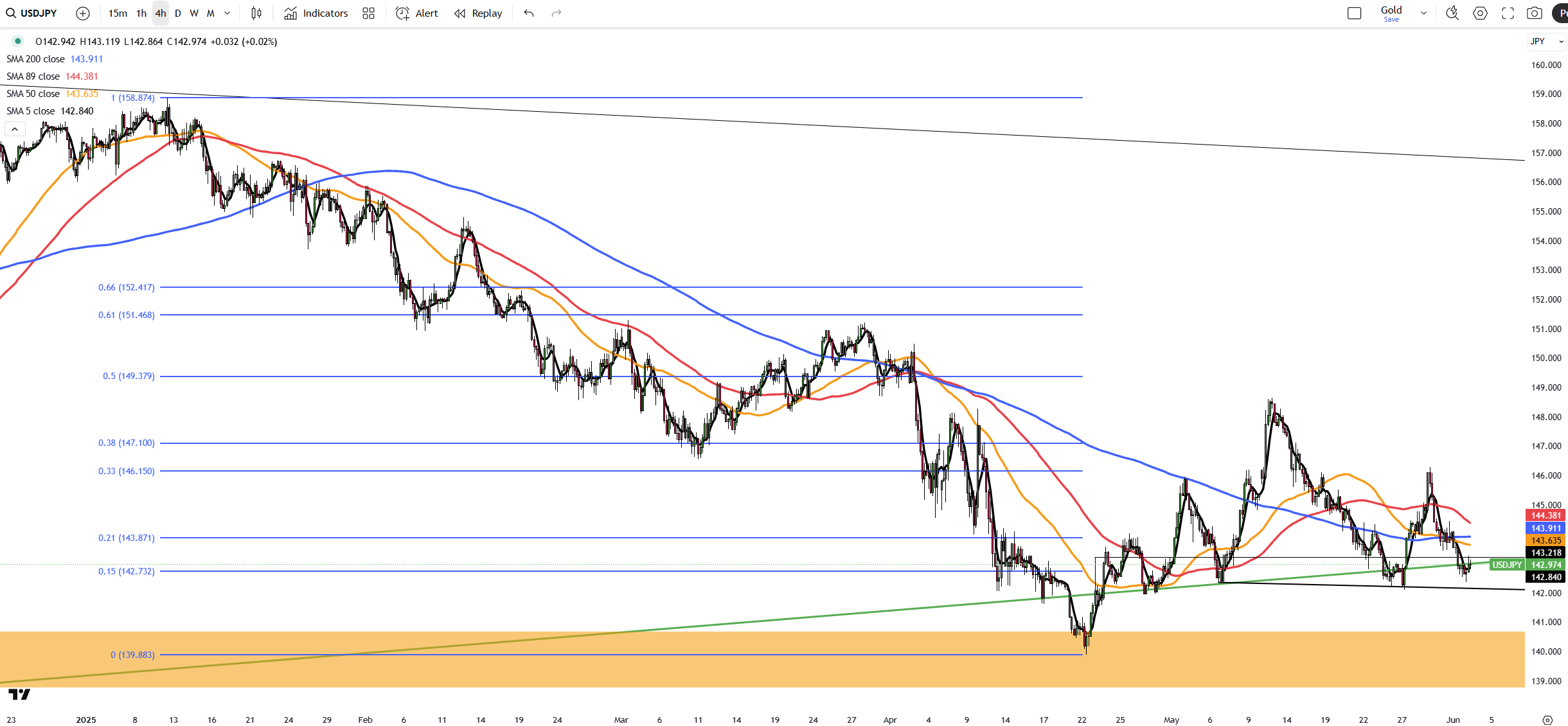
The Japanese yen fell past 143 per dollar on Tuesday, ending a three-day gain, despite BOJ Governor Kazuo Ueda hinting at potential rate hikes if conditions improve. Ueda pointed to steady recovery and firm corporate performance. A stronger U.S. dollar also weighed down the yen, as markets shrugged off weak U.S. data and rising trade tensions. Trump's plan to double metal tariffs further pressured Japan’s steel sector. Investors await upcoming labor and spending data.
The key resistance is at $143.50 meanwhile the major support is located at $142.85.
| R1: 143.50 | S1: 142.85 |
| R2: 144.30 | S2: 142.10 |
| R3: 144.70 | S3: 141.50 |
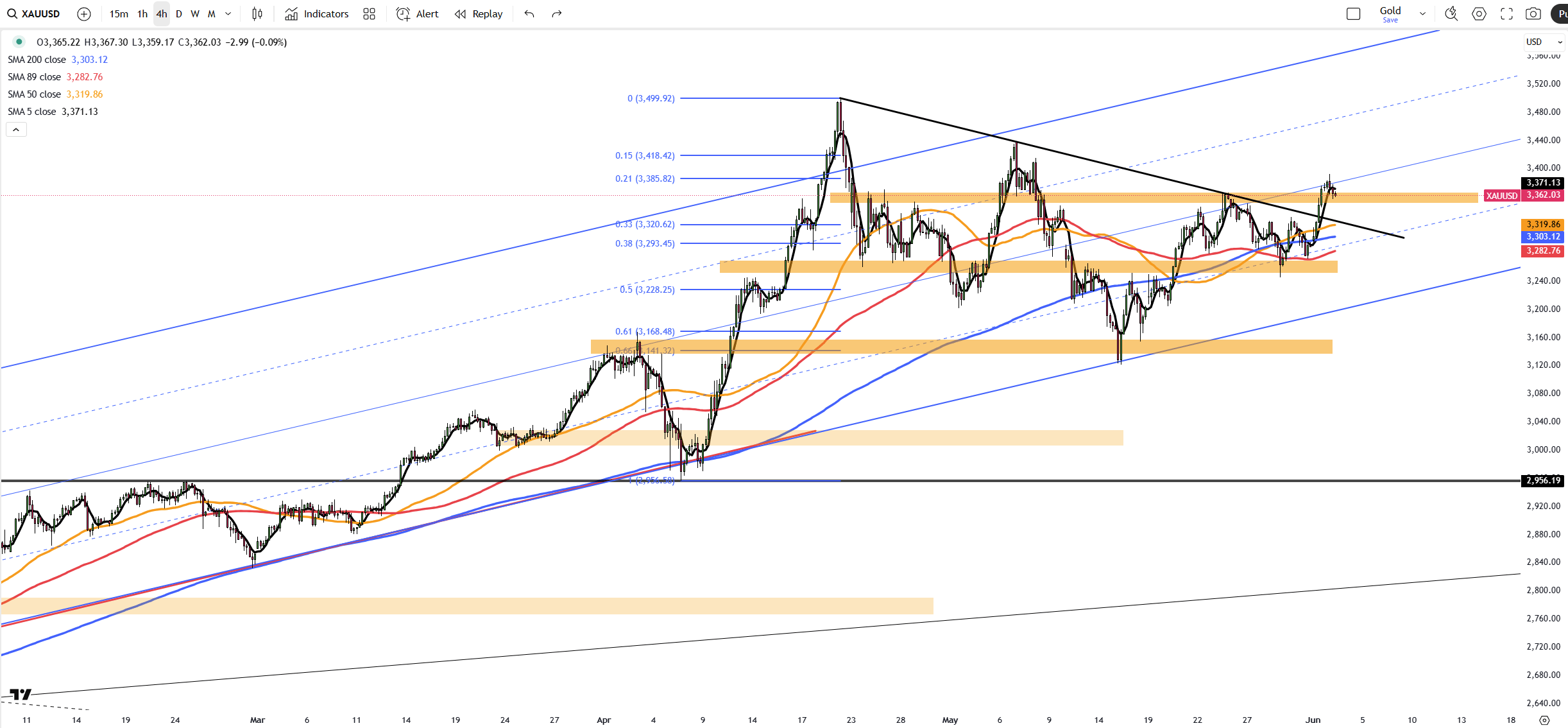
Gold slipped to around $3,370 per ounce on Tuesday but remained near a four-week high, supported by ongoing safe-haven demand. The metal surged 2.8% on Monday, its strongest daily gain since May 6, amid escalating trade and geopolitical tensions. President Trump announced plans to double tariffs on steel and aluminum, while U.S.-China tensions rose after he accused China of breaking a trade deal. Markets now await a possible meeting between Trump and President Xi. Meanwhile, Russia and Ukraine resumed peace talks on Monday, though little progress was made.
The first critical support for gold is seen at $3320 and the first resistance is located at $3385.
| R1: 3385 | S1: 3320 |
| R2: 3435 | S2: 3290 |
| R3: 3500 | S3: 3250 |
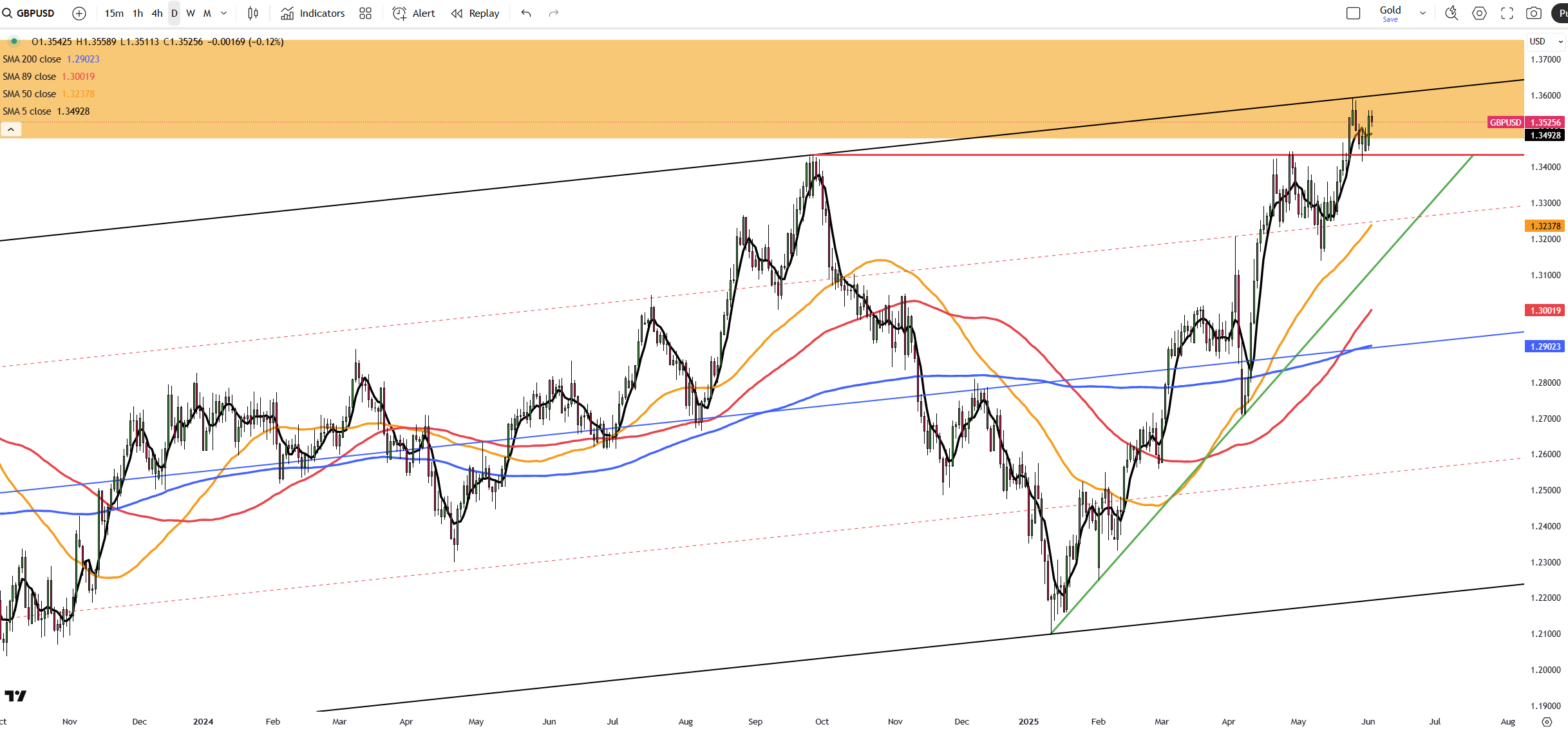
On Tuesday, June 3, 2025, GBP/USD traded near 1.3530 as the British pound strengthened, supported by U.S. dollar weakness driven by soft economic data and trade tensions. The outlook for the UK economy remained relatively upbeat. Markets now focus on the upcoming U.S. non-farm payroll report and any signals from the Bank of England. A potential BoE rate cut could pressure the pound, while continued weak U.S. data may weigh on the dollar.
The first critical support for gold is seen at 1.3425 and the first resistance is located at 1.3600.
| R1: 1.3600 | S1: 1.3425 |
| R2: 1.3750 | S2: 1.3165 |
| R3: 1.3850 | S3: 1.2890 |
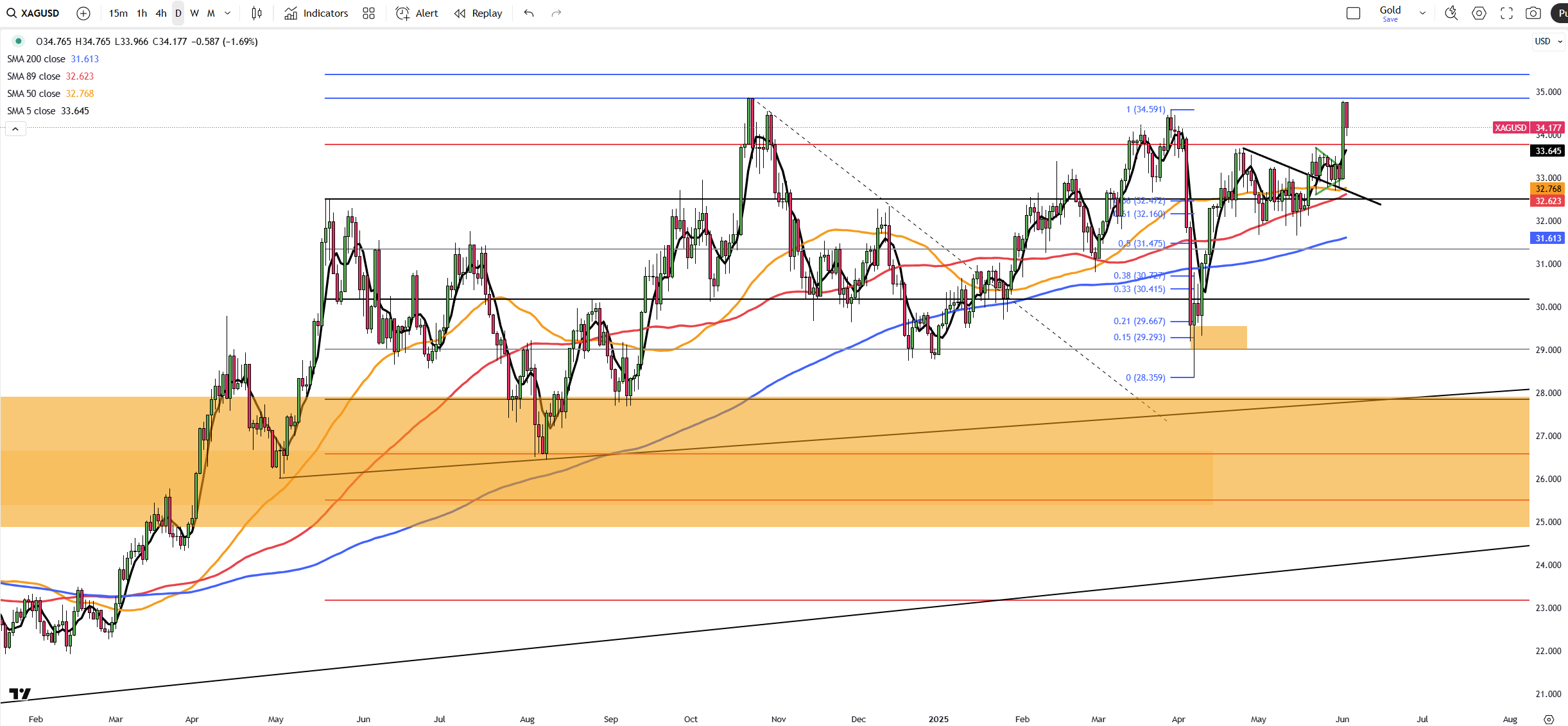
Silver surged over 5% on Monday to around $34.60 per ounce, near a two-month high, before easing to $34 on Tuesday due to profit-taking. The rally was fueled by rising trade tensions and safe-haven demand after President Trump announced a 50% tariff on steel and aluminum imports. China denied breaching a recent trade deal, casting doubt on a potential Trump-Xi call. Legal uncertainty around Trump’s trade measures further supported demand for precious metals.
The first critical support for gold is seen at 33.65 and the first resistance is located at 34.90.
| R1: 34.90 | S1: 33.65 |
| R2: 35.40 | S2: 32.80 |
| R3: 36.00 | S3: 32.50 |
 Bond Market Pushback Takes Center Stage
Bond Market Pushback Takes Center StageMarkets are almost fully pricing in another Federal Reserve rate cut this week, yet the US bond market continues to move in the opposite direction.
Detail Central Bank Expectations Reset the Tone (8-12 December)
Central Bank Expectations Reset the Tone (8-12 December)Traders adjusted positioning before the Federal Reserve’s December decision and evaluated fresh signals from the ECB, BoE and BOJ.
Detail Futures Stall, 10-Year Yield Pushes Above 4.1% (12.08.2025)US stock futures were flat on Monday ahead of the Fed’s meeting, with markets pricing an 88% chance of a 25 bp cut on Wednesday.
DetailThen Join Our Telegram Channel and Subscribe Our Trading Signals Newsletter for Free!
Join Us On Telegram!